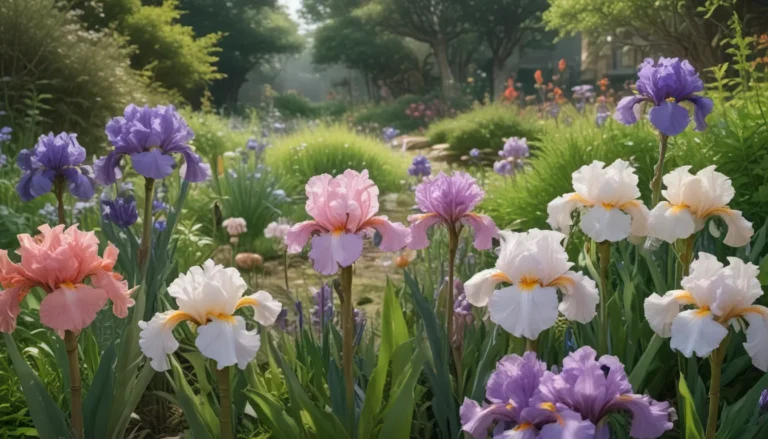Everything You Need to Know About Growing and Caring for Ferns

Are you fascinated by the delicate beauty of ferns and looking to bring some of that lush greenery into your own landscape or home? If so, you’ve come to the right place! Ferns have a long and fascinating history dating back 300 million years, making them one of the oldest plants on Earth. With over 20,000 known species, there is a vast array of ferns to choose from, ranging from petite evergreens to towering deciduous varieties.
In this comprehensive guide, we’ll cover everything you need to know about nurturing these prehistoric wonders, from propagation and cultivation to tips for proper care and maintenance. So, if you’re ready to dive into the world of ferns, let’s get started!
What Are Ferns?
Ferns belong to the Polypodiopsida class and the Polypodiophyta division of the plant kingdom. These vascular plants reproduce via spores and lack seeds or flowers, making them distinct from other spore-bearing plants like mosses. Ferns are characterized by their lace-like fronds, which range in color from olive to chartreuse and come in a variety of sizes, from petite ferns to towering giants.
These plants are highly adaptable and can thrive in a range of environments, from deep shade to full sun. With their intricate fronds and unique reproductive methods, ferns are a fascinating addition to any garden or indoor space.
Cultivation and History
Ferns have a rich history dating back 360 million years, with many species evolving during the Cretaceous period. While most ferns thrive in tropical regions, they can be found on every continent, including Antarctica. Human cultivation has further spread these plants across the globe, with enthusiasts growing them indoors and in specialized ferneries.
During the Victorian era, ferns gained popularity as both indoor and outdoor plants, with species like the lady fern becoming household favorites. Today, ferns continue to captivate gardeners with their beauty and resilience, making them a popular choice for both novice and experienced plant enthusiasts.
Propagation
Ferns can be propagated through spores, division, or runners. Propagating from spores is a challenging but rewarding method that involves collecting spores, germinating them in a controlled environment, and nurturing them until they develop into mature ferns. Division involves splitting a mature plant into smaller clumps, each with a growing tip, while propagating from runners entails encouraging new growth from existing plant structures.
Whether you choose to propagate from spores, division, or runners, each method offers a unique opportunity to expand your fern collection and watch these plants thrive under your care.
How to Grow
Ferns generally prefer shaded environments with high humidity and consistently moist soil. While most species thrive in dappled shade, some can tolerate full sun under certain conditions. To create the ideal growing environment for your ferns, provide well-drained, organic-rich soil, and keep the plants moist but not waterlogged.
Indoors, ferns require bright, indirect light, ample humidity, and regular watering to thrive. By mimicking their natural habitat and providing the right conditions, you can cultivate healthy, vibrant ferns in your home or garden.
Growing Tips
To ensure the successful growth of your ferns, keep the soil consistently moist, provide partial to full shade, and plant them in slightly acidic soil. By following these growing tips and providing the ideal conditions for your ferns, you can enjoy lush, flourishing plants year-round.
Maintenance
Ferns are low-maintenance plants that require minimal care once established. Trim dead foliage, apply mulch in spring, and divide overcrowded plants to promote healthy growth. By practicing simple maintenance tasks, you can keep your ferns looking vibrant and beautiful throughout the year.
Species and Cultivars to Select
With over 20,000 known species of ferns, there is a vast array of options to choose from when selecting plants for your garden or indoor space. From autumn ferns with their striking colors to Boston ferns known for their resilience, there are numerous species and cultivars to suit any preference.
Whether you’re drawn to the delicate beauty of Japanese painted ferns or the towering elegance of ostrich ferns, there is a fern variety to fit every space and style. By exploring the diverse world of ferns, you can discover unique species that will enrich your landscape and bring a touch of natural beauty to your surroundings.
Managing Pests and Disease
While ferns are generally resistant to pests and diseases, it’s essential to watch for common issues like scale, slugs, root rot, and caterpillars. By practicing good plant hygiene, providing adequate care, and using natural remedies when necessary, you can protect your ferns from potential threats and ensure their long-term health and vitality.
From identifying and treating common pests to promoting overall plant health, taking proactive measures can help your ferns thrive and flourish in your garden or home.
Best Uses
Ferns are versatile plants that can be used in a variety of settings, from shady borders to woodland gardens. Plant them in groups for a dramatic visual impact, or use them to add texture and interest to mixed plantings. With their lush foliage and varied forms, ferns make excellent companions for many plant species, including trilliums, hostas, and woodland wildflowers.
Whether you’re looking to create a serene woodland oasis or brighten up a shaded corner of your garden, ferns offer endless possibilities for landscape design and plant combinations.
Conclusion
In conclusion, ferns are fascinating and diverse plants that can add beauty and interest to any garden or indoor space. By understanding their unique characteristics, cultivation needs, and maintenance requirements, you can create a thriving fern collection that will delight and inspire you for years to come.
From selecting the right species and cultivars to providing the ideal growing conditions and managing pests and diseases, this comprehensive guide covers everything you need to know to grow and care for ferns successfully. So, whether you’re new to fern gardening or a seasoned enthusiast, dive into the world of ferns and discover the joy of nurturing these ancient and captivating plants.
Are you ready to explore the enchanting world of ferns and begin your own fern-growing adventure? Share your experiences, tips, and favorite fern varieties in the comments below, and let’s continue the conversation about these beautiful and resilient plants!





